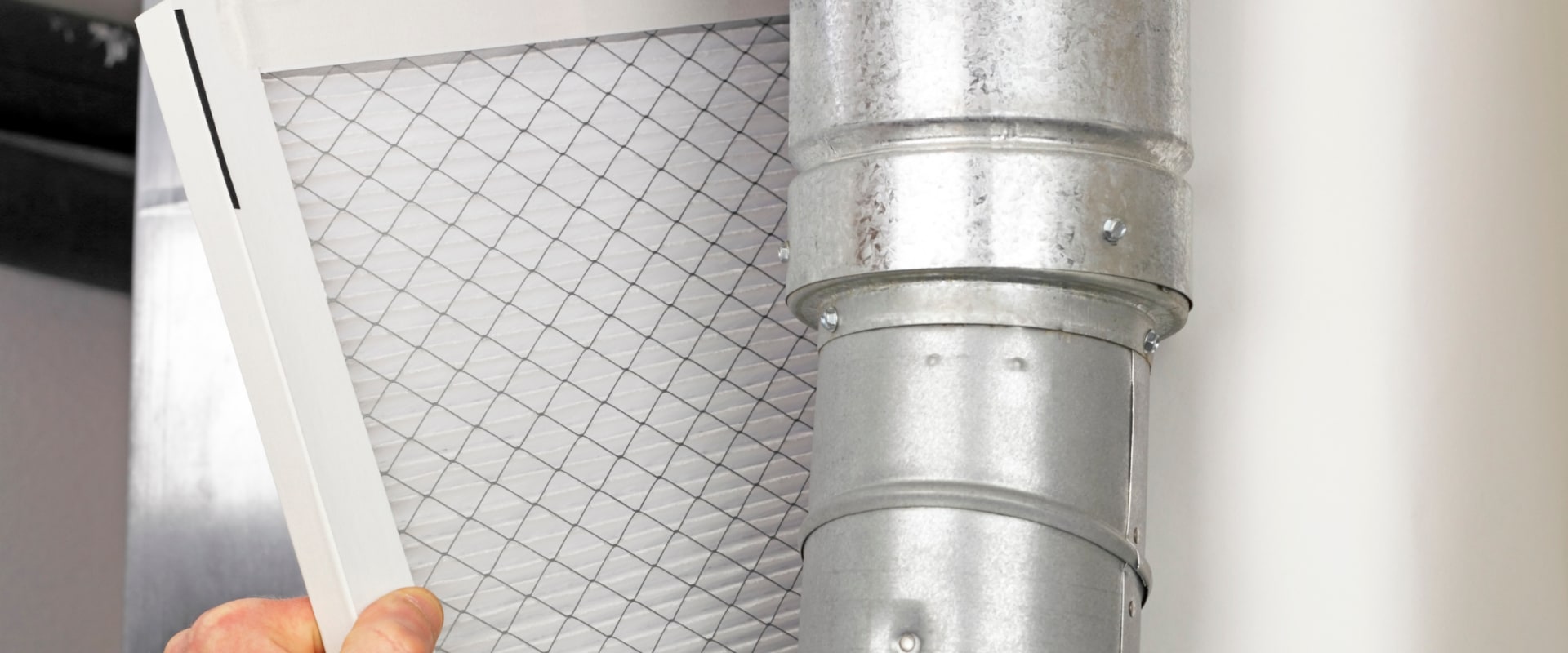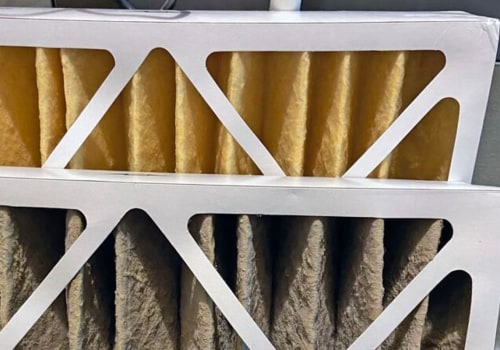16x30x1 Air Filter
The 16x30x1 air filter is an inconspicuous yet essential element of a well-functioning home. It may be small, but it plays a large role in keeping the air clean and healthy for all occupants. On the surface, this seemingly ordinary device appears to be nothing more than simple mesh material; however, its true importance lies beneath this deceptively unassuming exterior. This article will explore the purpose and benefits of a 16x30x1 air filter, as well as provide tips on how to choose the ideal one.
At first glance, it might not seem like much -- just some cloth stretched over a cardboard frame. However, this piece of equipment has immense potential when it comes to improving indoor air quality (IAQ). Its primary function is to trap airborne particles such as dust mites and pet dander that can make breathing difficult or cause allergies. In addition, these filters also help reduce odors caused by pets or cooking fumes while preventing larger items from entering HVAC systems where they could cause costly damage.
Not all 16x30x1 air filters are created equal — there are many different types available with varying levels of efficiency depending on various factors such as size and number of pleats per foot. It’s important to know what type works best for your needs so you can get maximum benefit from using them in your home or office space. The next section will explain exactly how to identify and purchase the right kind of filter for optimal IAQ performance.
1. Understanding The Different Types Of Air Filters
Air filters are a crucial part of maintaining clean air in any space. Understanding how different types of air filters work and the benefits they offer is an important step for anyone looking to improve indoor air quality (IAQ). This article will provide an overview of the various types of air filters, their functions, and applications.
The most frequently used type of filter is mechanical filtration. These use media such as fiberglass or cotton batting to trap airborne particles by size. The effectiveness depends on the density and type of material used; denser materials can capture smaller particles while sacrificing airflow rates. Mechanical filters also come in various shapes and sizes to fit standard HVAC systems like 16x30x1 inch units.
Electronic air cleaners are another popular option that works differently from mechanical filters. These utilize electrostatic energy technology to charge suspended particles which then attach themselves to collector plates within the unit itself, leaving behind cleaner air as it passes through. Electronic air cleaners require regular cleaning and maintenance due to their tendency to accumulate dust quickly, but generally offer higher efficiency than mechanical filters at capturing small particulate matter such as pollen, pet dander, smoke, bacteria, etc., making them ideal for those with allergies or asthma.
Both mechanical and electronic filtration have advantages depending on where they’re installed, what kind of environment they’re placed in, and personal preferences regarding IAQ improvement strategies. Knowing the differences between these two forms of air filtration helps inform decisions about how best to create a healthier home environment without compromising comfort levels or spending too much money on upgrades. With this knowledge comes the ability to better assess which type of filter—such as a 16x30x1 unit—can help achieve desired results when it comes to breathing safely indoors.
2. How A 16x30x1 Air Filter Can Improve Your Home
Allusion to an ancient proverb at the start: “The air we breathe, is life itself” - and this brings us to consider how a 16x30x1 air filter can bring about improvements in our home. Air filters are increasingly becoming important for homeowners and businesses alike due to their ability to protect from allergens, dust particles, pet hair, pollen etc. It is thus essential that you understand the basics of these filters and how they work so as to make informed decisions when it comes time to purchase one.
Air filters come in different sizes such as 10x20x1 or 14x25x1 which determine the size of the HVAC system they can be used with; however, if your system requires a specific dimension like 16x30x1 then it is worth considering investing into one. The major benefit of using this type of filter lies in its efficiency rate – usually higher than standard models – meaning more efficient filtration and hence better protection against airborne contaminants. This also means that fewer pollutants will enter your home resulting in cleaner indoor air quality and lesser chances of developing allergy-related issues.
Additionally, 16x30x1 air filters are typically made up of superior materials such as pleated fabric which helps capture small particulates while ensuring maximum airflow rate through the filter; thereby making them ideal choices for those living in areas with high levels of pollution or prone to allergies or respiratory illnesses. They can also help extend the lifespan of your HVAC unit by trapping dirt & debris before they reach other parts, reducing maintenance cost and downtime significantly over time.
In sum, understanding what a 16x30x1 air filter has to offer is key towards improving indoor air quality within homes and businesses alike. With proper selection & installation you can reap great benefits from such products without having to worry about frequent replacements. Now let's look at some of the benefits associated with installing a 16x30x1 air filter in detail...
3. Benefits Of A 16x30x1 Air Filter
The use of air filters is becoming increasingly popular with homeowners as they seek to improve the quality of indoor air. A 16x30x1 air filter can be an effective tool in this regard, due to its ability to remove particles from airborne pollutants and allergens. This article will outline some of the key benefits that accompany a 16x30x1 air filter:
Firstly, these types of filter are designed specifically for HVAC systems, meaning that their size and shape are optimized to fit within most standard ducts. Additionally, because 16x30x1 air filters have greater surface area than other sizes, they are able to capture more unwanted particles per pass when compared to smaller models. As such, fewer replacements may be necessary over time; thus saving money on replacement costs.
Secondly, such filters also help reduce dust build-up throughout the home by trapping it before it enters living spaces. Furthermore, their tight weave helps prevent molecules like pollen and pet dander traveling through the HVAC system into living areas, providing relief for those who suffer from allergies or asthma. Finally, using a high quality 16x30x1 air filter not only improves indoor air quality but also contributes to improved energy efficiency as well as prolonged life expectancy of the HVAC system itself.
These advantages make clear why so many people opt for installing a 16x30x1 air filter in their homes – enhanced air quality without sacrificing cost or convenience. Moving forward then, we shall take a look at different styles and materials available for this type of filter.
4. Different Styles And Materials Of 16x30x1 Air Filters
The air filter space is filled with many choices, and 16x30x1 filters are an important part of the mix. Much like a tailor making custom suits for customers, each type of air filter has its own distinct style and material that can accommodate different needs. To illustrate this idea further, imagine walking into a specialty store searching for the perfect dress shirt to match your favorite suit. The options range from crisp cotton blends to silky bamboo materials in various colors and designs. Similarly, when it comes to purchasing 16x30x1 air filters, there are just as many options available depending on individual preferences or requirements.
For instance, some common styles include pleated media filters made from synthetic fibers such as polyester or cellulose-cotton blend paper; rigid metal mesh screen filters; washable electrostatic filters made from aluminum frames covered with synthetic fiber layers; and disposable flat panel cardboard frame filters constructed out of nonwoven synthetic media. Depending on the environment they are being used in, these types of filters can vary significantly in terms of their filtration efficiency and lifespan—some may last up to six months while others need to be changed every few days. It’s also worth noting that certain materials such as HEPA (high-efficiency particulate arrestance) typically have higher dust holding capacities than other more commonplace choices such as fiberglass panels.
No matter what kind of filter you end up choosing ultimately, understanding the differences between them will help you make an informed decision about which one best fits your needs. With a wide array of sizes, shapes, materials, and styles available for 16x30x1 air filters alone—not to mention all the other varieties offered by manufacturers—it pays off to do your research beforehand so you can find exactly what works for you. Having this knowledge will allow users to confidently assess how well their chosen option will perform over time before committing to purchase it—and make sure that the product meets not only their expectations but also those set forth by any applicable environmental regulations or standards associated with its use contextually. From here we move onto comparing 16x30x1 air filters against other sizes...
5. Comparing 16x30x1 Air Filters To Other Sizes
When considering air filter sizes, it is important to note the differences between various types. For example, a 16x30x1 air filter can be compared to other standard sized filters. This article will discuss five key points of comparison when looking at different sizes of air filters.
First, one should consider the type and grade of the material used in each size of filter. Different grades may allow more or less airflow while still providing adequate filtration levels. Additionally, some materials offer better longevity than others which may be beneficial depending on usage needs. A second factor is installation ease: typically larger filters require additional supports to secure them properly. Thirdly, cost is an important consideration as well; generally speaking, larger sized filters tend to carry a higher price tag than smaller ones due to the increased amount of filtering media required for construction.
The fourth point deals with capacity: larger air filters are capable of trapping more airborne particles over time before needing replacement—a crucial component in maintaining clean indoor air quality (IAQ). Lastly, it's useful also to keep in mind that certain shapes work better for particular HVAC systems than others do; thus ensuring compatibility between system and filter dimensions is essential for optimal performance and efficiency.
By assessing these criteria when selecting an appropriate-sized filter for your home or office space you can ensure the best results based on your IAQ goals and budget requirements. Making educated decisions about which size works best for specific applications can help promote healthier living conditions while avoiding unnecessary costs associated with purchasing oversized components.
6. How Often Should You Change A 16x30x1 Air Filter
When considering a 16x30x1 air filter, it is important to consider how often they should be changed. To answer this question, there are several factors to take into account: the environment where the air filter resides, its quality of construction, and what type of particles the filter needs to trap.
First, if the environment has high levels of dust or other contaminants in the air then more frequent changes will likely be necessary. For instance, those living near an industrial area may need to replace their filters every two months instead of three or four months like normal residential areas. Secondly, if the air filter is constructed from lower quality materials then frequent replacements may be needed since these cheaper models cannot last as long without becoming clogged with debris. Thirdly, depending on what types of particles one wants filtered out (e.g., pet dander), additional replacement intervals may apply in order for the filter to remain effective.
To summarize: 1) The environment can affect how often a 16x30x1 air filter needs replacing; 2) Lower quality filters require more frequency for changing; 3) Different particle sizes necessitate different replacement times; 4) High levels of dust and other pollutants warrant earlier replacement dates than non-industrial locations. Understanding these considerations is essential when deciding how often to change a 16x30x1 air filter so that users can get optimal performance from their device. Accordingly, transitioning into discussing which factors should be used when selecting a 16x30x1 air filter becomes all the more relevant.
7. Factors To Consider When Choosing A 16x30x1 Air Filter
Choosing the right 16x30x1 air filter is like searching for a needle in a haystack; it requires careful consideration, deliberation and research. With so many different types of filters available on the market today, it's important to arm yourself with knowledge to make sure you pick the one that best suits your needs. In order to select an appropriate 16x30x1 air filter, there are several factors that must be considered.
First and foremost, you'll need to determine what type of filtration system will work best for your home or office space. Different systems require different types of filters—some are designed for high-efficiency particulate air (HEPA) filtration while others may use standard fiberglass media or electrostatic filters. You should also consider whether a disposable or reusable filter would be most suitable for your application. Furthermore, if you have any existing allergies or health concerns related to airborne particles such as dust mites, pollen or pet dander, then selecting an allergen-rated filter can help reduce irritation from these allergens.
It's also important to take into account how often you need to replace your filter and how easy this process will be. Typically, HEPA filters require more frequent replacement than those made with other materials due to their higher efficiency rating. Reusable models usually last longer but they may not be able to capture smaller particles like HEPA filters do. Additionally, some filters offer extended warranties which provide peace of mind when making purchasing decisions.
TIP: Before buying a new 16x30x1 air filter, ensure that its size is compatible with your current ventilation system by consulting a professional HVAC technician who can help guide you through the selection process and recommend the best product for your situation. From here, you can begin researching various brands and products until you find one that meets all of your requirements at a price point that fits within budget constraints.
8. Tips For Choosing The Right 16x30x1 Air Filter
Choosing the right 16x30x1 air filter can be a daunting task with so many options on the market. It is important to understand exactly what type of filter you need, as well as its capabilities and limitations. There are several tips that consumers should consider before making their purchase decision.
First, one should determine the size of the filter they require by measuring the existing space or using manufacturer specifications. Secondly, it is recommended to assess the needs of your home environment such as allergies, pets, or smokers and choose an appropriate MERV rating accordingly. Finally, look for filters that feature electrostatic technology which helps trap airborne particles more effectively than traditional fiberglass materials.
It is also advantageous to check customer reviews in order to verify performance claims and get good quality assurance from previous purchasers. Taking all these factors into account will help ensure you select a product that meets both your demands and budget requirements. With this knowledge in hand, customers can make an informed choice when selecting a 16x30x1 air filter for their home environment.
Having identified how to properly shop for a 16x30x1 air filter, reasons why installing such a device in one's residence must now be considered.
9. Reasons To Install A 16x30x1 Air Filter In Your Home
A 16x30x1 air filter is a device used to improve the quality of the air in homes and other residential or commercial buildings. They are widely available and relatively easy to install, making them an attractive option for many homeowners. Installing a 16x30x1 air filter can provide many benefits that make it worth considering as part of any home improvement project.
First, installing one of these filters will help remove allergens from the indoor environment, such as pollen, dust mites, pet dander, mold spores, and other airborne particles. This can be especially beneficial for people who suffer from allergies or asthma since they may experience fewer symptoms when exposed to fewer allergens. In addition, having a cleaner indoor environment can also reduce odors caused by cooking or smoking inside the house.
Second, this type of filter can help increase energy efficiency in the home. By capturing airborne pollutants before they enter your HVAC system, you can prevent them from being circulated through your entire house which would require more energy to do so. Additionally, reducing contaminants in your air ducts increases their lifespan since dirt and debris build-up causes them to wear out faster over time. Finally, using a 16x30x1 air filter regularly helps keep your heating and cooling systems running at peak performance since clogged components inhibit airflow and cause energy losses throughout your home’s ventilation system.
Installing a 16x30x1 air filter offers numerous advantages which makes it a sensible choice for improving your family’s health and comfort while saving money on utility bills at the same time. With all these benefits taken into account however, there are some potential issues that should be addressed if you decide to use one of these devices in your home. Troubleshooting common problems related to installation or maintenance may become necessary depending on how well you follow manufacturer guidelines for proper usage and care of the unit itself.
10. Troubleshooting Common Issues With A 16x30x1 Air Filter
With the increasing prevalence of air pollution, an efficient and effective way to maintain a healthy home environment is to install a 16x30x1 air filter. All too often, however, installation can be accompanied by common issues that require troubleshooting for optimal results. This article provides an overview on how to identify and address these problems.
To begin with, it’s important to recognize when something isn’t working properly with your newly-installed 16x30x1 air filter. A telltale sign may include strange odors or smells within the space, indicative of inadequate filtration or airflow blockage due to clogs in the system. Similarly, if you notice dust particles lingering in the air despite regular use of the filter then chances are there might be some trouble brewing underneath surface level.
The next step would involve diagnosing any potential problem areas and getting down to the core issue at hand. It’s recommended that users check their filters regularly – usually every 1-2 months depending on usage patterns – as well as clean them out using compressed air cans or vacuums (if appropriate). Additionally, ensuring that all vents leading into or away from the interior spaces remain unobstructed will help promote better overall circulation throughout your living space.
By following these simple steps one can ensure that their 16x30x1 air filter continues to operate efficiently and effectively so they can continue breathing easy knowing that their homes are free from harmful pollutants and airborne contaminants.
Frequently Asked Questions
What Is The Best Type Of Air Filter For My Home?
When selecting an air filter for use in a home, it is important to consider the size of the filter and its ability to effectively remove pollutants from the air. Air filters come in various sizes and types, ranging from simple mechanical filters that capture large particles such as dust, dander, and pollen to more complex electronic or electrostatic models that target both large and small particles. The most effective type of air filter will depend on specific needs such as allergies, asthma, pet dander, tobacco smoke removal, etc., but all should be capable of trapping airborne allergens efficiently.
In order to determine what type of filter is best suited for a particular space or environment, it is necessary to understand the different components involved in filtration and how they work together. Generally speaking, HEPA (High Efficiency Particulate Absorption) filters are considered among the most efficient when it comes to removing microscopic particles like bacteria, viruses, mold spores, and chemical vapors from indoor air. Additionally, some HEPA-rated filters can also help reduce odors due to their activated carbon component.
Size also matters when choosing an air filter; larger units may provide more coverage but require more frequent maintenance than smaller ones do. It is recommended that homeowners consult with HVAC experts prior to making any final decisions about which type of system would suit their needs best. This way they can make sure they get an effective product that meets their budget while still providing reliable protection against airborne contaminants and irritants.
How Much Does A 16x30x1 Air Filter Cost?
Air filters are an important part of maintaining a healthy home environment. The size, type and cost of the air filter all contribute to the overall performance of the filter. This article will explore the cost of 16x30x1 air filters in more detail.
Air filters come in various sizes depending on the application they are being used for. A 16x30x1 air filter is one such size that can be found in residential homes. These filters tend to have higher efficiency ratings than larger types, making them well suited for small spaces like bedrooms or bathrooms. However, their smaller size also means that they need to be replaced more often than other types of filters.
The cost of a 16x30x1 air filter varies from manufacturer to manufacturer and depends on how many packs of the same size are purchased at once. Typically these filters range from $5-10 per pack when bought individually, but discounts may apply when purchasing multiple packs at once. Additionally, some manufacturers offer subscription services which allow customers to save money by having replacement filters delivered regularly according to a predetermined schedule.
In terms of affordability, buying individual packs or subscribing to a regular service both provide consumers with different options when it comes to replacing their 16x30x1 air filter as needed. Understanding these costs is essential when deciding what type of air filter is best suited for any given space.
How Do I Install A 16x30x1 Air Filter?
Installing a 16x30x1 air filter is an important step to ensure that the home's heating and cooling systems are running efficiently. Properly installed filters will help reduce energy costs and improve indoor air quality by trapping airborne pollutants, such as dust, pollen, pet dander, mold spores, smoke particles and other particulate matter from entering the HVAC system. Knowing how to properly install this type of filter can be beneficial for homeowners who wish to maintain their homes in top condition.
The first step in installing a 16x30x1 air filter is to measure the size of the existing filter slot opening. This measurement should match the exact dimensions of the new filter being purchased so that it fits securely into the space without any gaps or overlaps. Once the correct measurements have been taken, it is time to insert the new air filter into place. The side with arrows on it should face away from the blower motor while ensuring that there is no gap between its edges and those of the frame itself. After inserting the new filter, secure it firmly using fastener clips or screws provided with it if needed.
Finally, when installation is complete check all around for proper seating of both sides to make sure they fit snugly against each other without any gaps or spaces left open which could allow contaminants through. It may also be helpful to inspect both sides of the filter periodically throughout its life span for signs of dirt buildup or damage due to wear and tear caused by regular use over time so that cleaning or replacement can occur as necessary.
What Are The Signs That I Need To Replace My 16x30x1 Air Filter?
Air filters are an important part of the home HVAC system, providing clean air into a living space. It is necessary to regularly change and replace air filters in order to ensure that they remain effective and efficient at trapping airborne particles such as dust, pollen, mold spores, pet dander and other allergens from entering the home. 16x30x1 air filters specifically are among one of the most common sizes used for residential applications. Knowing when to replace these types of filters is essential for preserving both indoor air quality and avoiding costly repairs or replacements due to clogged systems.
Signs that a 16x30x1 filter needs replacing include: decreased airflow through vents; noticeable odors coming from vents; dirt buildup on walls or ceilings near vents; dusty surfaces throughout the house after running the AC system; increased energy bills due to overworking motor fans; increased allergies or respiratory issues while indoors. Additionally, it is recommended that homeowners inspect their air filter every month and change them out accordingly (usually once every 3 months).
When changing out your 16x30x1 filter, make sure you check its size before buying a new one so you can be sure you're getting the right fit. Also, opt for higher-efficiency filters with MERV ratings 8-13 which capture more pollutants than lower rating ones do but still allow good flow rate. By following these steps and taking note of any signs indicating a need for replacement, homeowners can rest assured that their HVAC unit will perform efficiently without compromising indoor air quality within their homes.
Are 16x30x1 Air Filters Effective Against Pet Dander?
Air filters are an important tool in improving the air quality inside a home, however pet owners may be particularly interested to know how effective 16x30x1 air filters are at filtering out pet dander. Pet dander is made up of tiny particles of skin and fur that can cause allergic reactions for some people, so having an appropriate filter installed is key to maintaining healthy living conditions.
To illustrate this point, consider the story of one family who have both pets and allergies. After years of trying different remedies without success, they finally decided to invest in a more powerful air filter - specifically, a 16x30x1 size model. The results were impressive; within days their allergy symptoms had all but disappeared as the filter was able to capture most of the airborne particles from their beloved cats.
It is clear then that these types of filters are indeed capable of trapping pet-related allergens with great efficiency, which makes them highly recommended for households with furry friends and sensitive occupants alike. In addition, such air filters require regular maintenance and replacement on account of dust buildup over time – something that should not be overlooked if you want your investment to pay off in improved health.
Conclusion
Air filters such as the 16x30x1 are an important part of any home. They can improve air quality and protect against particles that may be harmful to health. Installing a 16x30x1 filter is relatively straightforward, and it is not too expensive either. It is also effective at removing pet dander from the air, making it ideal for those with allergies.
The frequency of filter replacement depends on usage, but there are certain signs to watch out for, such as excessive dust or poor airflow from vents. If these symptoms occur then replacing the 16x30x1 filter should be considered promptly in order to help maintain good indoor air quality. When done correctly this can be like refreshing the air in your home – just like opening up windows after a long winter!
Overall, 16x30x1 air filters provide both practicality and peace of mind when installed correctly and replaced regularly. Homeowners who wish to enjoy better indoor air quality need look no further than these simple yet effective solutions.











